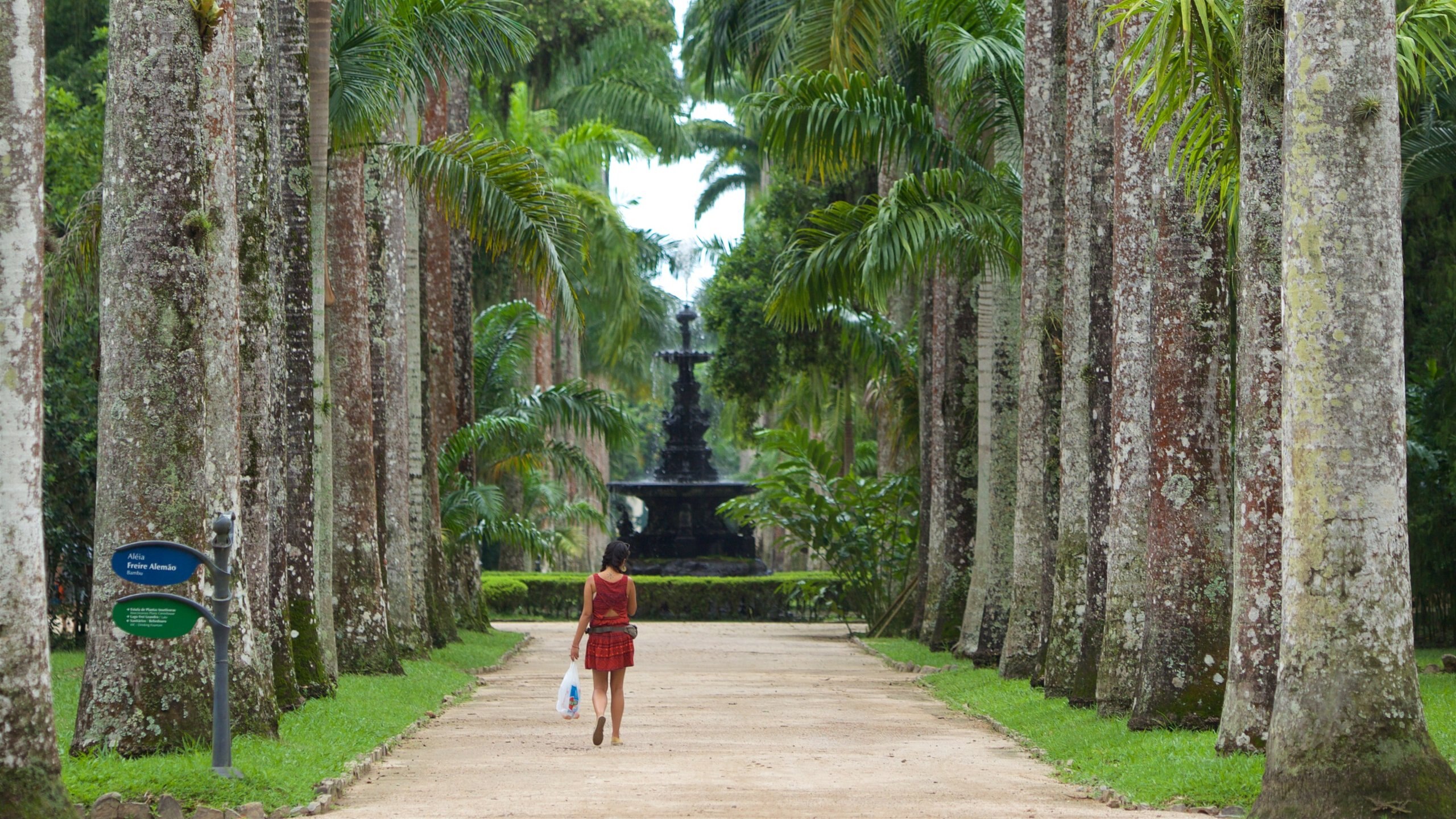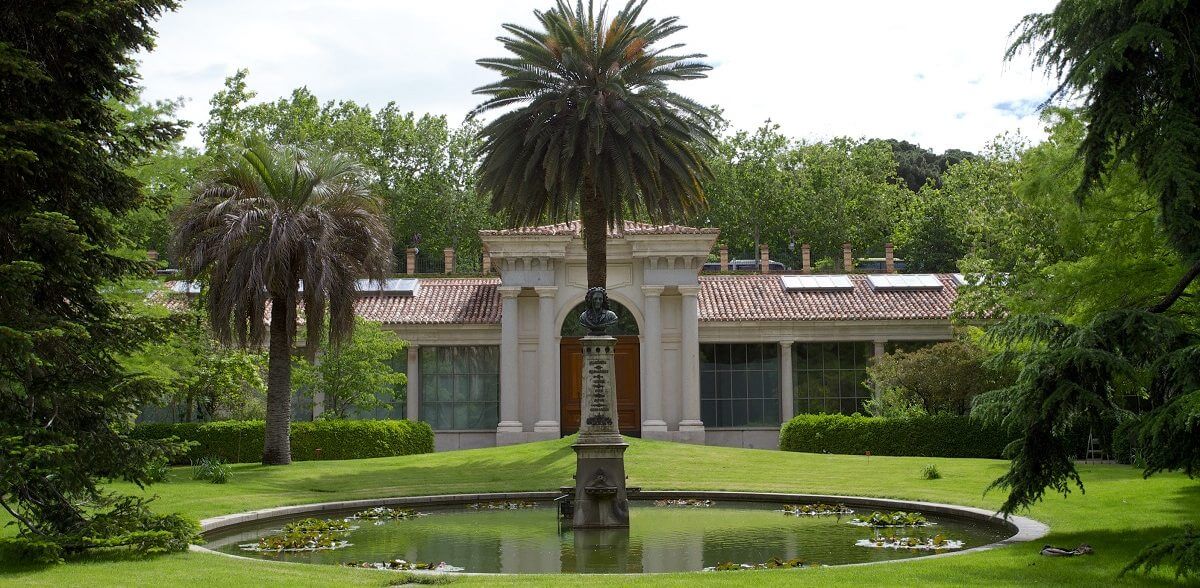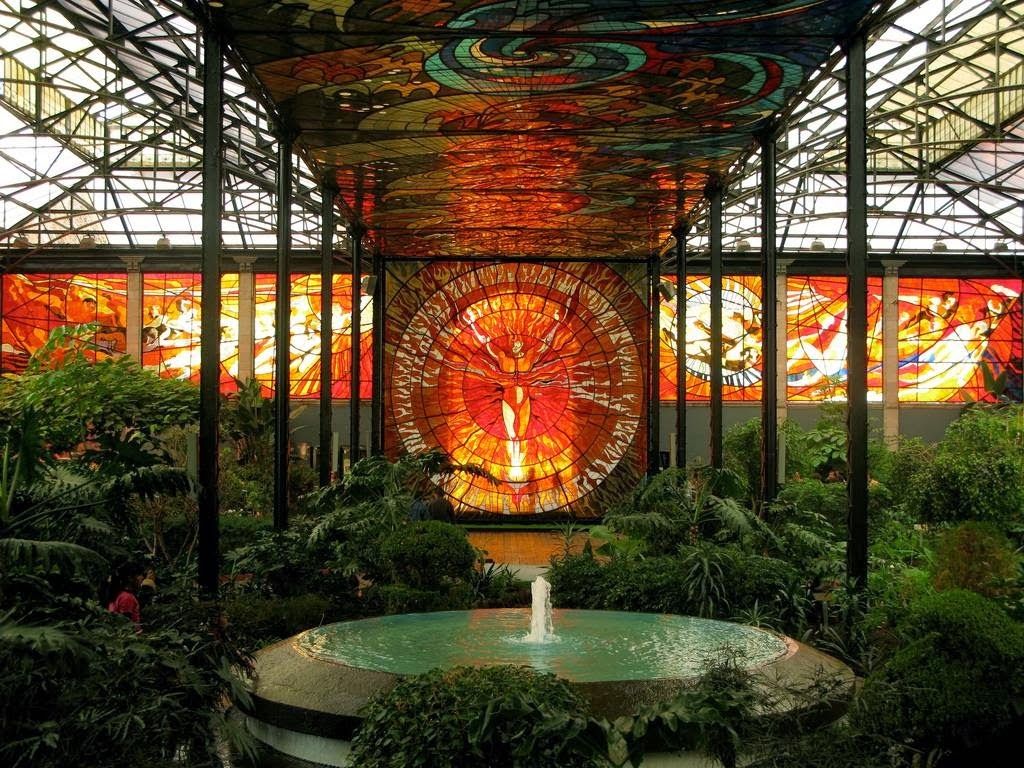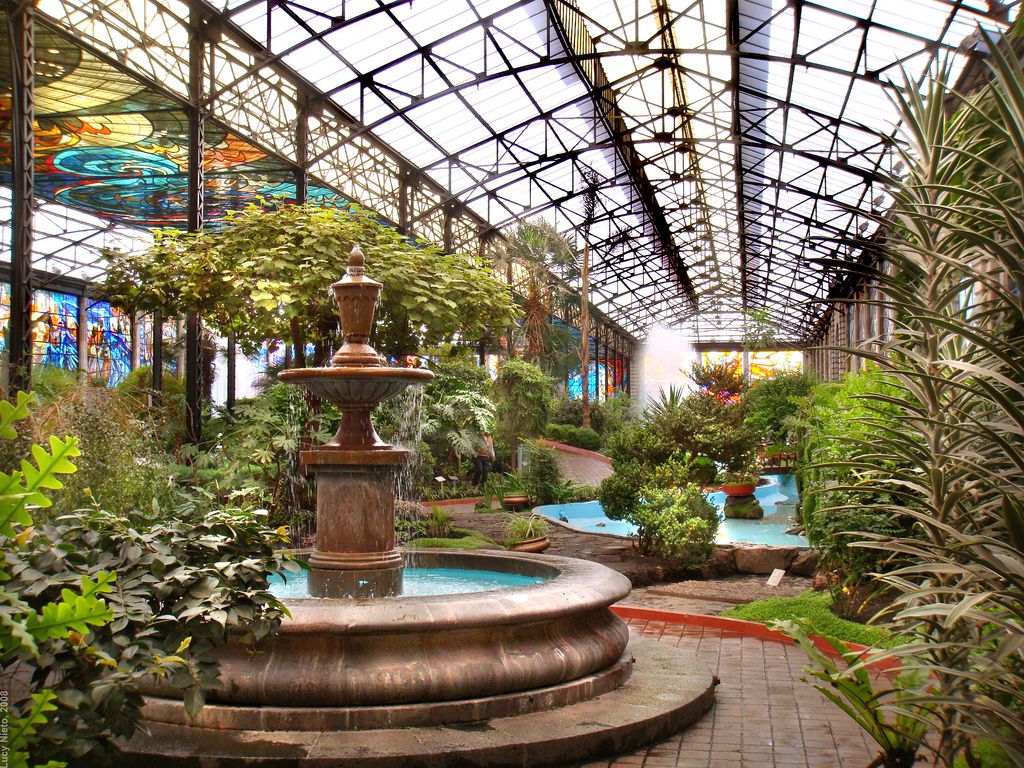Jardín botánico caguas: Jardin Botanico y Cultural de Caguas
Qué Hacer | Jardin Botanico y Cultural de Caguas
Nuestro Jardín Botánico
El Jardín Botánico y Cultural William Miranda Marín es un museo viviente que enaltece la cultura puertorriqueña en relación con la naturaleza y la agricultura tropical. El Jardín está ubicado en la ciudad de Caguas, en terrenos que una vez pertenecieron al antiguo ingenio azucarero San José, centro de producción agrícola de vital importancia en el Valle del Turabo durante el Siglo XIX y la primera mitad del siglo XX.
El Jardín ofrece hermosos senderos, recorridos educativos y actividades especiales para explorar los siguientes temas:
La historia del antiguo ingenio San José y la industria azucarera en Caguas;
La ecología del Valle del Turabo;
La importancia cultural y ecológica de los árboles y otras plantas que nos rodean;
La historia taina representada en sala de exhibición;
La agricultura moderna bajo ambiente controlado en invernaderos y agricultura tradicional, así como otros aspectos de la vida rural puertorriqueña de antaño.

Entre las áreas de interés están la Huerta Frutal, la Arboleda Ancestral Taína y el arte rupestre de nuestros indígenas, la Arboleda Ancestral Africana, El Corredor Ribereño, el Bosque del Patrimonio. Además, la Casa Jíbara con su siembra agrícola familiar, el Palmar, la Arboleda Criolla del Siglo XIX, el Bosque Florido, el Jardín Acuático, la Zona Histórica del antiguo ingenio azucarero, el Lago de la Identidad Criolla, la Plaza Artesanal y la Plaza Agrícola Urbana con sus naves de hidroponía, árboles frutales y colección de diversas plantas conocidas por su belleza, sus aromas y propiedades medicinales y culinarias.
En tu visita conocerás los árboles sembrados en los Bosques y Arboledas, la agricultura artesanal y tradiciones locales de cocina, medicina casera y vida rural. Nuestros senderos, bordeados de heliconias, jengibres, bromelias, orquídeas, palmas y otras especies de belleza tropical, dirigen a los visitantes en sus recorridos. El Jardín sirve también como herramienta de orientación y educación. Actividades especiales abiertas a la comunidad incluirán talleres sobre diversos temas que abarcan desde el cultivo de plantas y la confección de remedios caseros hasta el avistamiento de aves y el arte de tallar madera y piedra.
Actividades especiales abiertas a la comunidad incluirán talleres sobre diversos temas que abarcan desde el cultivo de plantas y la confección de remedios caseros hasta el avistamiento de aves y el arte de tallar madera y piedra.
Este es tu Jardín porque está diseñado para Puerto Rico y porque está hecho contigo en mente. Disfrútalo y celebremos la naturaleza y el entorno puertorriqueño.
El Jardín es cuna de la historia y cultura del Pueblo de Puerto Rico pues convergen en este único lugar la etnia taína, española y africana que dieron origen a la raza puertorriqueña y al criollismo por el cual se ha distinguido nuestra ciudad desde su origen. En esta cuna histórica y cultural convivieron taínos, españoles y africanos y se conservan petroglifos taínos, yacimientos arqueológicos precolombinos, las ruinas del antiguo ingenio azucarero San José fundado por españoles hace dos siglos y un barracón donde residieron esclavos africanos.
El desarrollo cultural de los pueblos está íntimamente ligado a la relación entre los grupos humanos y la flora, fauna y naturaleza del entorno en que habitan dichos grupos. Por tal razón la visión del fundador del Jardín, William Miranda Marín, fue crear arboretos autóctonos puertorriqueños y arboretos distintivos de las distintas etnias que formaron el pueblo puertorriqueño y salvaguardar y conservar dicho patrimonio. Creó Adicionalmente umbráculos bajo la convicción que el futuro agrícola dependerá de una agricultura bajo ambiente controlado sin subestimar la agricultura tradicional la cual promovió mediante el desarrollo de talas jíbaras.
Por tal razón la visión del fundador del Jardín, William Miranda Marín, fue crear arboretos autóctonos puertorriqueños y arboretos distintivos de las distintas etnias que formaron el pueblo puertorriqueño y salvaguardar y conservar dicho patrimonio. Creó Adicionalmente umbráculos bajo la convicción que el futuro agrícola dependerá de una agricultura bajo ambiente controlado sin subestimar la agricultura tradicional la cual promovió mediante el desarrollo de talas jíbaras.
Misión
Enaltecer nuestra historia y cultura para conocimiento, orgullo, disfrute y recreo de nuestro pueblo y sus visitantes. El Jardín es un amplio museo bajo el cielo comprometido con el estudio, conservación, y exposición del patrimonio Puertorriqueño.
Visión
Ser el parque histórico y cultural líder de Puerto Rico.
Reabre sus puertas el Jardín Botánico y Cultural de Caguas
Luego de varios meses cerrado a causa de la pandemia, el Jardín Botánico y Cultural de Caguas reabre sus puertas a las familias puertorriqueñas, tomando todas las medidas de salubridad y seguridad para así convertirse en la primera opción de entretenimiento y diversión en un ambiente al aire libre.
El Jardín abrirá sus puertas inicialmente para los miembros de su programa de membresía anual Amigos del Jardín, que con un módica aportación destinada a su Corporación sin fines de lucro, permitirá al socio ingresar y utilizar las facilidades del Jardín dentro del horario de lunes a sábado entre 7:00 a.m. a 6:00 p.m.
Uno de los atractivos exclusivos para los miembros del programa de membresía es un programa de entrenamiento al aire libre a cargo de la entrenadora e instructora Reynaeliz Nazario. Siguiendo todos los protocolos de seguridad establecidos por el Jardín, las clases se llevarán a cabo todos los lunes y miércoles de 4:00 p.m. a 5:00 p.m.
El Jardín Botánico y Cultural de Caguas, por su lado ofrece dentro de sus áreas de interés; la Huerta Frutal, la Arboleda Ancestral Taína y el arte rupestre de nuestros indígenas, la Arboleda Ancestral Africana con la majestuosa escultura del artista puertorriqueño Samuel Lind , El Corredor Ribereño, el Bosque del Patrimonio. Además la Casa Jíbara, el Palmar, la Arboleda Criolla del Siglo XIX, el Bosque Florido, el Jardín Acuático, la Zona Histórica del antiguo ingenio azucarero, el Lago de la Identidad Criolla, la Plaza Artesanal y próximamente la Plaza Agrícola Urbana con sus naves de hidroponía, árboles frutales y colección de diversas plantas conocidas por su belleza, aromas y propiedades medicinales y culinarias.
Además la Casa Jíbara, el Palmar, la Arboleda Criolla del Siglo XIX, el Bosque Florido, el Jardín Acuático, la Zona Histórica del antiguo ingenio azucarero, el Lago de la Identidad Criolla, la Plaza Artesanal y próximamente la Plaza Agrícola Urbana con sus naves de hidroponía, árboles frutales y colección de diversas plantas conocidas por su belleza, aromas y propiedades medicinales y culinarias.
Otras alternativas que el Jardín Botánico de Caguas ofrecerá será unos talleres artísticos con programas de teatro musical, salsa, canto y guitarra. En adición a esto actualmente el Jardín sirve para enmarcar dos eventos que se están llevando a cabo simultaneamente en el Jardín, y que desde su apertura ya se han convertido en los favoritos del público, el Drive Inn Park y el Haunted Drive Inn.
El Drive In Park, un autocine que semana tras semana proyectará varios filmes destinados para toda familia, y que esta semana su cartelera incluirá los filmes “Scary Stories”, “IT”, “Gretel & Hansel”, y “ Coco”. Los boletos están a la venta a través de la plataforma deTicketpop en su página web, www.ticketpop.com a un costo de $20.00 por vehículo y con una capacidad de cinco personas máximo. Las tandas son semanalmente de jueves a domingo en el horario de 7:00pm. El Drive in Part tendrá una capacidad de 80 vehícuos por función.
Los boletos están a la venta a través de la plataforma deTicketpop en su página web, www.ticketpop.com a un costo de $20.00 por vehículo y con una capacidad de cinco personas máximo. Las tandas son semanalmente de jueves a domingo en el horario de 7:00pm. El Drive in Part tendrá una capacidad de 80 vehícuos por función.
Otro de los eventos clave para esta época es el Haunted Drive Inn, único recorrido de terror sobre ruedas en Puerto Rico. Un recorrido de terror en la seguridad y comodidad del auto de los visitantes, que los llevará a través de un trayecto a través de las veredas del Jardín y en donde los gritos serán la órden del día. Este abrirá sus puertas hasta el 15 de noviembre, y para los boletos que son limitados por día, los interesados puede acceder www.ticketera.com.
Dentro de los protocolos de seguridad que todo visitante que llegue a las facilidades del Jardín Botánico y Cultural de Caguas tendrá que adoptar será; la toma de temperatura, el permanecer con sus mascarillas en todo momento que esté en las facilidades, ser desinfectado al momento de su ingreso pasando por el túnel de desinfección, toda transacción que realice dentro de las facilidade,s serán siempre a través de ATH Móvil business, pay pal y tap card ( nada de efectivo), además de mantener siempre una distancia mínima de seis pies.
En cumplimiento con las órdenes ejecutivas decretadas por el Gobierno de Puerto Rico, otros ajustes que se estarán implementando serán; las actividades privadas se llevarán a cabo con un tope de 50 por ciento de capacidad del venue, el horario de los concesionarios y actividades dentro del Jardín serán de 10:00 a.m. a 4:00 p.m., el área del Paraíso de Árboles frutales en donde se realiza la venta de árboles y plantes abrirá los miércoles de 10:00am a 4:00pm, el espacio de Vereda Celestial será exclusivamente por cita previa.
Caguas
Home | contacts | USA | Puerto Rico
- Administrative unit of the Municipality of Caguas
Caguas is a municipality in Puerto Rico.
Flag of the municipality of Caguas. The coat of arms consists of a shield with a blue field. There are two pairs of three golden arrows on the field, forming the cross of St. Andrew the First-Called. Above the cross is a crown depicting Caguax, cacique of the Turabo Valley at the time of the arrival of the Spanish conquerors. On the flag, the shield is on another blue field, on which the cross of arrows is repeated. |
Administratively, the municipality of Caguas is divided into 11 barrios:
|
|
|
|
|
Barrio Bairoa
Flag of the barrio of Bairoa (previous). Flag of the barrio of Bairoa. This flag had the original white field. Recently it was changed to light peach. The shield was designed by Vilma Roman Torres based on the history of the Bairoa sector. The symbols and their meanings are as follows: 1842 is the year of the first document identifying Byroa as “Barrio”. Bairoa – means “clean river water”. Mountains – represents the mountains surrounding the valley. Cemí (Indian idol) – represents our Taino roots and the fertility of the valley. Carmelite shield – represents the parish of the sector of the Catholic faith in 1869. River – represents the river Bairoa, from which its name comes. The tobacco plant is the main production in the barrio. Sugarcane is a product of muscovado sugar and Barrio rum. |
Barrio Beatriz
Flag of the barrio Beatriz. The flag was designed by Carlos I. Fernández Velázquez and its background color is “seafoam”, a kind of light turquoise or blue-green. |
Barrio Borinken
Flag of the Barrio Borinquen. The flag was designed by student Armando Sosa Flores and its background color is “flower blue”, something like a very light blue. Its simple symbolism is as follows: Cemí (Indian idol) is the same object that was found at the El Algodón farm near the banks of the Turabo River. |
Barrio Cañabon
Flag of the barrio Cañabón. The flag was designed by student Carlos E. Acevedo Rivera and its background color is light peach. Its symbolism is as follows: In the center of the shield, forming a circle, symbols appear that indicate the historical origin of the Canabón barrio. A small shield of the city of Caguas (crossed arrows with pineapples) appears above the main circle. Broken chain – the abolition of black slavery in 1873 Cemí – a mountain is visible in the background (de facto it is believed that the design of these stone idols was inspired by the actual shape of our mountains), which means the contribution of the native Indians to the development of the area. The development of a botanical garden in the area known as Las Casitas is currently under consideration. |
Barrio Cañabonchito
Flag of the barrio Cañaboncito. The flag was designed by Norma I. Villafane Semidei and its background color is “buffalo”, a kind of creamy yellow. Its symbolism is described as follows: Blue, red and gold – symbolizes the city of Caguas. Crown – Represents the “Cacica” or chief of the Caguax. Pineapple – represents the settlement of El Pinal, since the city was first known. Rectangle – also denotes the city of Caguas. Arrows are native weapons. Sugar cane – stands for “good sugar cane”, giving the barrio its name. The map is a geographical depiction of the barrio. Cow – represents the livestock industry. Tobacco leaf – represents the tobacco industry. Church – represents Christianity and brotherhood. |
Barrio Rio Cañas
Flag of the barrio of Rio Cañas. The flag was designed by Lidia Milano Albino and its background color is light peach. Its symbolism is as follows: Blue, green and earth colors are associated with nature. Sugar factory – symbolizes the center of the main economic activity. Sugarcane – once meant food and devotion to the worker. The river – its waters are a symbol that gave the name to the barrio because of the abundance in the zone of reservoirs. Pineapple – brings to mind the origins of our city of Caguas, the city of Turabo (river), when in 1750 the settlement of San Sebastian del Pinal (place of pineapples) was founded. |
Barrio San Antonio
Flag of the barrio of San Antonio. The flag was designed by student Caterina B. Torres Figueroa and its background color is “flower blue”, a kind of very blue. |
Barrio San Salvador
Flag of the barrio of San Salvador. The flag was designed by student Milanisa Montalvo Garcia and has a light peach background color. Its symbolism is as follows: Blue background – existing multiple resources and fresh water for drinking. The river, sky and mountains are heaven because this barrio keeps its natural resources away from the destruction of cement construction and technology. Plantain or banana trees – symbolize the abundance of these products. A garland of olive leaves is a symbol of peace, of which there are many in the area, and hope for better days. |
Barrio Tomas de Castro
Flag of the Barrio Tomas de Castro. |
Barrio Turabo
Flag of the barrio Turabo in 1997-2001. Flag of the barrio Turabo since 2001. The 1997 Flag was designed by Mr. Juan Colón de Jesus and approved by the Municipality of Caguas on November 22, 1997. The orange color of the first triangle on the flag represents the “clay” of the Turabo Valley in Caguas and symbolizes the original name of the first settlement “San Sebastian del Barrero”. The arrowhead of the white triangle symbolizes the “Cacique Caguax” (Chief of the Taino Indians) of the Turabo Valley. The broad yellow stripe represents the light of the sun, industry, and the urban area of the parish. The narrow blue stripe symbolizes the Turabo River (and also represents the blue field of the Caguas flag). The broad green stripe represents the mountains and the rural area of the community, as well as the hope for the future. The yellow and white colors symbolize the faith and harmony of the inhabitants of the barrio. The new flag was introduced around 2001. |
Advertising
Caguas, Puerto Rico – date and make friends.
TinderTinder
- products
- premium-function
- Our subscriptions
- Tinder plus®
- Tinder Gold ™
- Tinder Platinum ™
9000
000 9000 9000
005 Support
- Install
Sign in
Sign in
TinderTinder
Caguas is one of the best places to meet people. If you live here or want to go here, on Tinder you will always find a couple nearby.
Use Tinder to find people who share your interests. Spend the evening with new friends, sit at the bar or enjoy a cup of coffee in good company. You can also take a walk around the city together – see the sights or take a fresh look at familiar places.
Join
- Countries
- Puerto Rico
- Caguas
›
›
Dating ideas. Caguas, Puerto Rico
You already know which city is perfect for dating, but how will you spend time together? We’ve already planned everything.
 Here are the best places and ideas for dates in the city:
Here are the best places and ideas for dates in the city:William Miranda Marin Botanical and Cultural Garden
Palmer Plaza
Arts Center
Cathedral of Dulce Nombre de Jesus
Caguas Tobacco Museum
Looking for a couple in the city of Caguas?
Those who are looking for couples in this city also look at these cities.
- San Juan
- Bayamón
- Carolina
- Yauco
- Ponce
Tinder has a lot of cool features to help you make friends and make friends. Now we will talk about some of them.
First of all, Tinder is very easy to use. You just need to create an account. Don’t forget to add your interests, photo, and description to your profile so that we can learn more about you.
Passport function
Find couples all over the world – in Paris, Los Angeles, Sydney. Forward!
Current location
Caguas
Join
Tinder users usually share their interests with other members of our community.


 The arrows were used as a reminder of the first Christian place of worship established in the region, which was consecrated under the auspices of Saint Sebastian. There are pineapple patches to reflect local agriculture.
The arrows were used as a reminder of the first Christian place of worship established in the region, which was consecrated under the auspices of Saint Sebastian. There are pineapple patches to reflect local agriculture.
 Six sectors make up the barrio and are represented in its symbolism: Bees – designates the Las Abejas sector, where there were once many beehives. Pan fruit – denotes the Los Panes sector, a very rich harvest. Mango tree – designates the La Jurado or El Mango sector. Jurado was the surname of the first inhabitants; The mango tree has stood at the entrance to the barrio for generations. The house is the sector of Luis Muñoz Grillo, who donated his house to the current school. Pineapples are a sector of Las Pinas that was once also a staple. Crossroads – designates the Las Cruces sector dividing the road into the municipalities of Caguas, Cayey and Sidra.
Six sectors make up the barrio and are represented in its symbolism: Bees – designates the Las Abejas sector, where there were once many beehives. Pan fruit – denotes the Los Panes sector, a very rich harvest. Mango tree – designates the La Jurado or El Mango sector. Jurado was the surname of the first inhabitants; The mango tree has stood at the entrance to the barrio for generations. The house is the sector of Luis Muñoz Grillo, who donated his house to the current school. Pineapples are a sector of Las Pinas that was once also a staple. Crossroads – designates the Las Cruces sector dividing the road into the municipalities of Caguas, Cayey and Sidra. Indian Villages – Representing the “Yukaeke” or main Indian settlement believed to have existed at the site.
Indian Villages – Representing the “Yukaeke” or main Indian settlement believed to have existed at the site. Chimney – The right side is the San Jose Sugar Factory and the left side is the Santa Catalina Sugar Factory. Both are surrounded by a sugar cane plantation and the birthplace of the Caguitas River.
Chimney – The right side is the San Jose Sugar Factory and the left side is the Santa Catalina Sugar Factory. Both are surrounded by a sugar cane plantation and the birthplace of the Caguitas River.
 Its symbolism is very simple: Bright blue and gold are the symbol of the sky and the countryside, respectively. Crown, pineapple and Indian (with crossed arrows) are elements present in the coat of arms of Caguas and meaning the same meaning.
Its symbolism is very simple: Bright blue and gold are the symbol of the sky and the countryside, respectively. Crown, pineapple and Indian (with crossed arrows) are elements present in the coat of arms of Caguas and meaning the same meaning.

 Here are the best places and ideas for dates in the city:
Here are the best places and ideas for dates in the city: